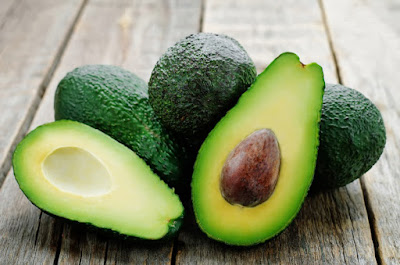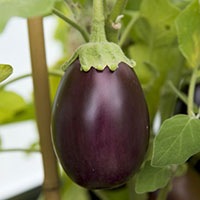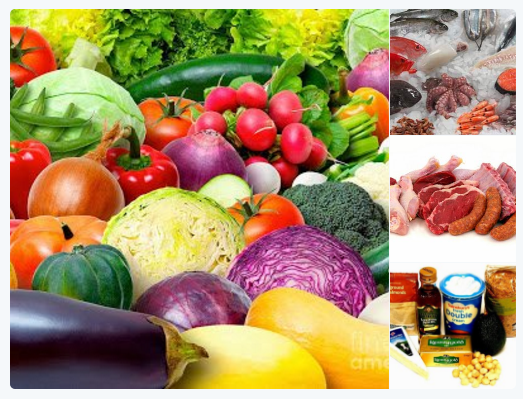"Low carb diets have been linked to several impressive health benefits. Research has shown that theyre particularly effective at reducing hunger and aiding weight loss. Theyve also been associated with decreased blood pressure and LDL (bad) cholesterol levels, as well as increased HDL (good) cholesterol. Whats more, low carb diets have been found to improve blood sugar control in those with type 2 diabetes. Low carb diets typically provide less than 130 grams of carbs per day, while very low carb diets typically provide 2050 grams of carbs per day."
For example a possible range might be:-
Low carb (ketogenic) 0-50g carbohydrate per day
Typical low carb 50-90g
Typical low carb 50-90g
Liberal low carb 90-130g
Moderate carb 130-170g
High carb 170g and more
"However, some very low carb diets can be low in fibre, a nutrient thats important for digestive, heart, and gut health. In fact, studies estimate that only 5% of American adults independent of whether they eat low carb or not meet the recommended 2538 grams of fibre per day. Fortunately, if you follow a low carb diet and are worried about your fibre intake, several tasty foods are both low in carbs and high in fibre.
Moderate carb 130-170g
High carb 170g and more
"However, some very low carb diets can be low in fibre, a nutrient thats important for digestive, heart, and gut health. In fact, studies estimate that only 5% of American adults independent of whether they eat low carb or not meet the recommended 2538 grams of fibre per day. Fortunately, if you follow a low carb diet and are worried about your fibre intake, several tasty foods are both low in carbs and high in fibre.
Here are fourteen healthy high fibre, low carb foods.
Flax seeds are small oil seeds that are packed with nutrients. In particular, theyre good sources of omega-3 fatty acids, fibre, and antioxidants. Theyre also low in digestible net carbs the total grams of carbs minus the grams of fibre. Notably, flax seeds have a lower ratio of omega-6 to omega-3 than most other oil seeds. This is important, as a lower omega-6 to omega-3 ratio has been associated with a reduced risk of several chronic diseases. Flax seeds are easily incorporated into your diet and should be ground to reap all their potential health benefit.
Chia seeds
Though small in size, chia seeds are rich in several nutrients. In addition to being high in fibre, protein, and several vitamins and minerals, chia seeds are one of the best-known plant sources of omega-3 fatty acids. Chia seeds can be sprinkled a-top salads and yogurt or added to smoothies. They also absorb liquids well, turning into a gel that can be used as a vegan egg replacement or thickener for sauces and jellies.
Avocado
High in healthy fats, avocados have a unique buttery texture. Technically a fruit, avocados are typically consumed as a vegetable and can be added to a variety of dishes. In addition to being rich in monounsaturated fats, avocados are a good source of fibre, folate, potassium, and vitamins K and C.
Avocado
High in healthy fats, avocados have a unique buttery texture. Technically a fruit, avocados are typically consumed as a vegetable and can be added to a variety of dishes. In addition to being rich in monounsaturated fats, avocados are a good source of fibre, folate, potassium, and vitamins K and C.
Almonds
Almonds are among the worlds most popular tree nuts. Great for snacking, theyre highly nutritious and rich in healthy fats, antioxidants, and essential vitamins and minerals, including vitamin E, manganese, and magnesium. As theyre also a good source of fibre and protein, almonds may help increase feelings of fullness and aid weight loss.
Unsweetened coconut meat
Coconut meat is the white flesh inside a coconut. Its often sold shredded and can be added to desserts, granola bars, and breakfast foods for added texture. Coconut meat is high in healthy fats and fibre, while being moderate in carbs and protein. Its also rich in several important minerals, particularly copper and manganese. Copper aids bone formation and heart health, while manganese is essential for fat metabolism and enzyme function.
Blackberries
Sweet and tart, blackberries are a delicious summer fruit. Theyre also incredibly nutritious, with just 1 cup (140 grams) boasting more than 30% of the Daily Value (DV) for vitamin C. Berries are among the most antioxidant-rich fruits. Regular intake has been associated with a reduced risk of chronic inflammation, heart disease, and certain forms of cancer. Additionally, a 1-week study in 27 men with excess weight or obesity on a high fat diet found that eating blackberries daily increased fat burning and insulin sensitivity.
Raspberries
Another sweet yet tart summer fruit, raspberries are best enjoyed shortly after purchasing. Low in calories, theyre also surprisingly high in several essential vitamins and minerals. In fact, just 1 cup (140 grams) provides more than 50% of the DV for vitamin C and 41% of the DV for manganese. Similarly to blackberries, raspberries are rich in disease-protecting antioxidants. They can be eaten as a snack, baked into desserts, and added to yogurt parfaits or overnight oats.
Pistachios
Humans have been eating pistachios since 6000 BC. While technically a fruit, pistachios are culinarily used as a nut. With their vibrant green colour and distinctive flavour, pistachios are popular in many dishes, including desserts, such as ice creams and cakes. Nutritionally, theyre high in healthy fats and vitamin B6, an essential vitamin that aids blood sugar regulation and the formation of haemoglobin.Almonds are among the worlds most popular tree nuts. Great for snacking, theyre highly nutritious and rich in healthy fats, antioxidants, and essential vitamins and minerals, including vitamin E, manganese, and magnesium. As theyre also a good source of fibre and protein, almonds may help increase feelings of fullness and aid weight loss.
Unsweetened coconut meat
Coconut meat is the white flesh inside a coconut. Its often sold shredded and can be added to desserts, granola bars, and breakfast foods for added texture. Coconut meat is high in healthy fats and fibre, while being moderate in carbs and protein. Its also rich in several important minerals, particularly copper and manganese. Copper aids bone formation and heart health, while manganese is essential for fat metabolism and enzyme function.
Blackberries
Sweet and tart, blackberries are a delicious summer fruit. Theyre also incredibly nutritious, with just 1 cup (140 grams) boasting more than 30% of the Daily Value (DV) for vitamin C. Berries are among the most antioxidant-rich fruits. Regular intake has been associated with a reduced risk of chronic inflammation, heart disease, and certain forms of cancer. Additionally, a 1-week study in 27 men with excess weight or obesity on a high fat diet found that eating blackberries daily increased fat burning and insulin sensitivity.
Another sweet yet tart summer fruit, raspberries are best enjoyed shortly after purchasing. Low in calories, theyre also surprisingly high in several essential vitamins and minerals. In fact, just 1 cup (140 grams) provides more than 50% of the DV for vitamin C and 41% of the DV for manganese. Similarly to blackberries, raspberries are rich in disease-protecting antioxidants. They can be eaten as a snack, baked into desserts, and added to yogurt parfaits or overnight oats.
Pistachios
Wheat bran
Wheat bran is the hard outer coating of the wheat kernel. While its found naturally in whole grains, it can also be purchased on its own to add texture and a nutty flavour to foods like baked goods, smoothies, yogurt, soups, and casseroles. Wheat bran is rich in several important vitamins and minerals, with 1/2 cup (30 grams) providing 41% of the DV for selenium and more than 140% of the DV for manganese. Although, perhaps what its best known for is its impressive amount of insoluble fibre, a nutrient that can help treat constipation and promote regular bowel movements.
Cauliflower
Cauliflower is a popular item on low carb diets, as it can be riced for a grain substitute or even made into a low carb pizza crust. Part of the Brassica family, cauliflower is a cruciferous vegetable thats low in calories and carbs yet high in fibre, vitamins, and minerals. Its also a good source of choline, which is important for brain and liver health, as well as metabolism and DNA synthesis.
Broccoli
Broccoli is a popular cruciferous vegetable thats high in several important nutrients. In addition to being low in calories, its high in fibre and several essential vitamins and minerals, including folate, potassium, and vitamins C and K. It also boasts more protein than many other vegetables. While it can be enjoyed cooked or raw, research shows that steaming it provides the greatest health benefits.
Asparagus
A popular springtime vegetable, asparagus comes in several colours, including green, purple, and white. Its low in calories yet high in vitamin K, providing 46% of the DV in 1 cup (134 grams). The same serving also packs 17% of the DV for folate, which is vital during pregnancy and helps with cell growth and DNA formation. While its usually cooked, raw asparagus can add a pleasant crunch to salads and veggie platters.
Aubergine / Eggplant
Also known as aubergines, eggplants are used in many dishes around the world. They add a unique texture to dishes and contain very few calories. Theyre also a good source of fibre and several vitamins and minerals, including manganese, folate, and potassium.
Purple Cabbage
Also referred to as red cabbage, purple cabbage is a nutritious way to add a pop of colour to your dishes. While it tastes similar to green cabbage, the purple variety is higher in plant compounds that have been linked to health benefits, such as improved heart and bone health, reduced inflammation, and protection against certain forms of cancer. Purple cabbage is also low in carbs, high in fibre, and an excellent source of vitamins C and K.
The Bottom Line
Whether youre interested in weight loss or lowering your blood sugar levels, eating fewer carbs can have numerous health benefits. And despite what you might think, you can reduce your carb intake while getting enough fibre.
In fact, many low carb, high fibre foods are healthy and incredibly delicious."
Most words above from Kelli's article which you can see in full, and with all relevant research links here
You may also be interested in reading 'Introduction to low-carb for beginners', find it here
You may also be interested in reading 'Introduction to low-carb for beginners', find it here
Dear reader, you will find a variety of articles and recipe ideas within this blog. Please note, not all may be suitable for you. If you may have any food allergies, or underlying health issues these must always be taken into account. If you are a diabetic and not sure how certain foods may affect your blood sugars, test is best, i.e. use your meter.
All the best Jan






